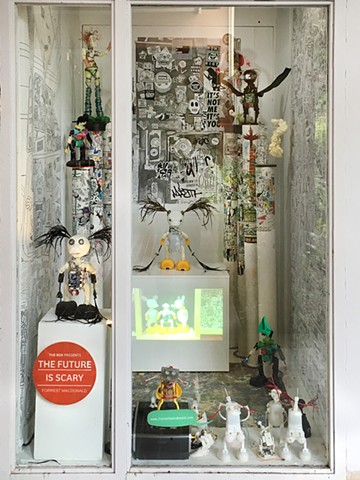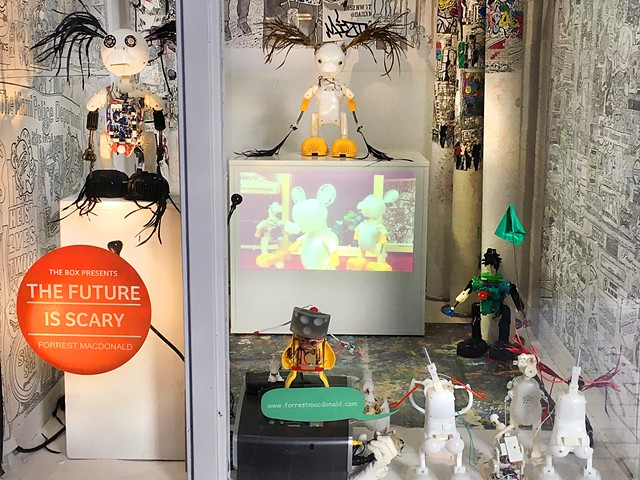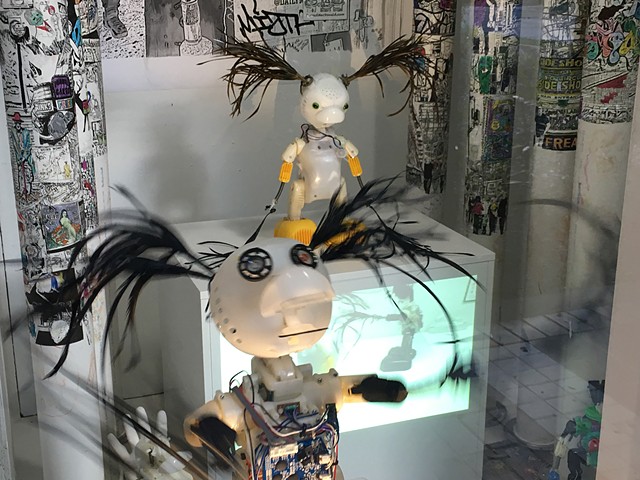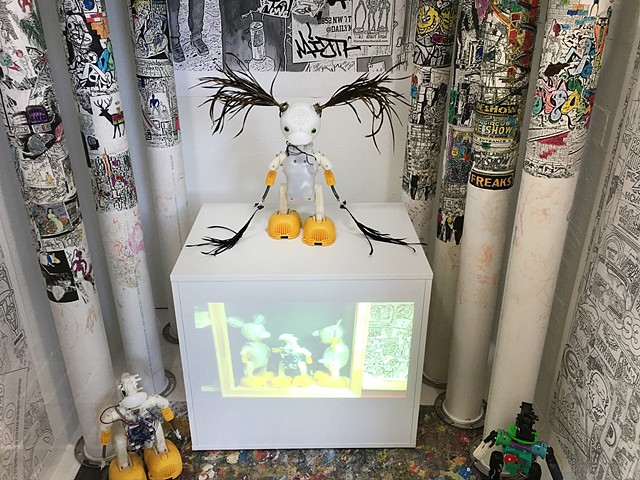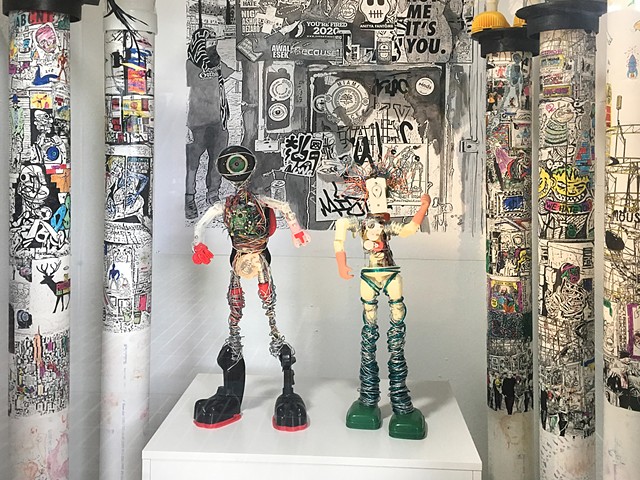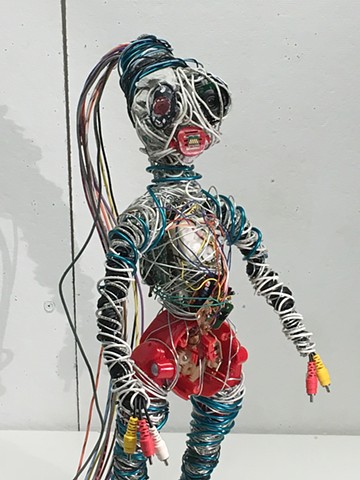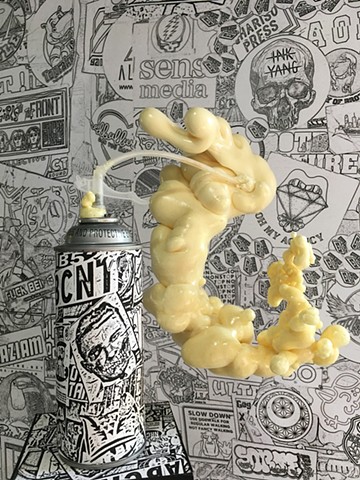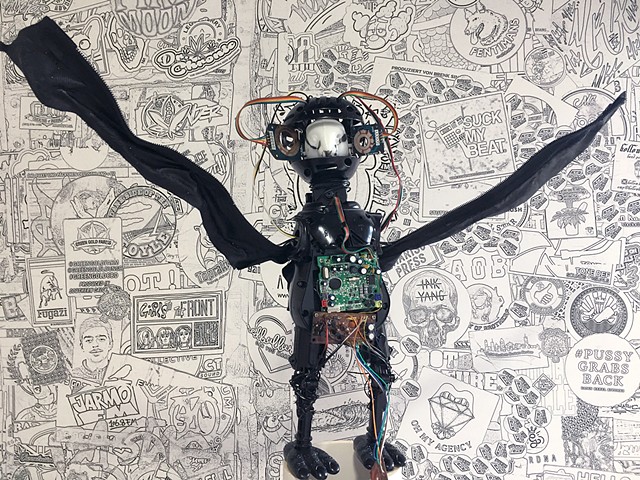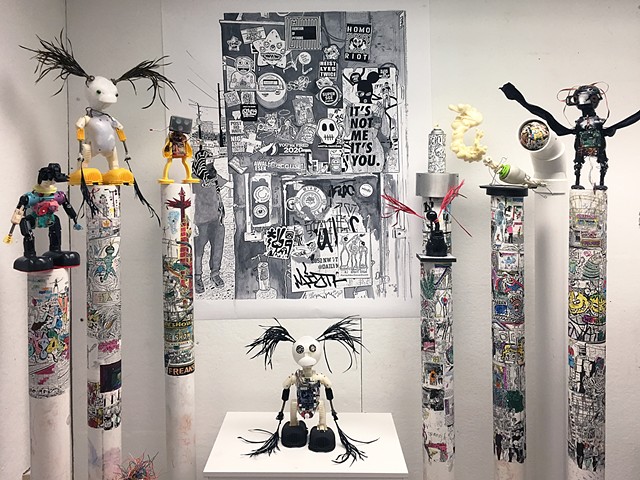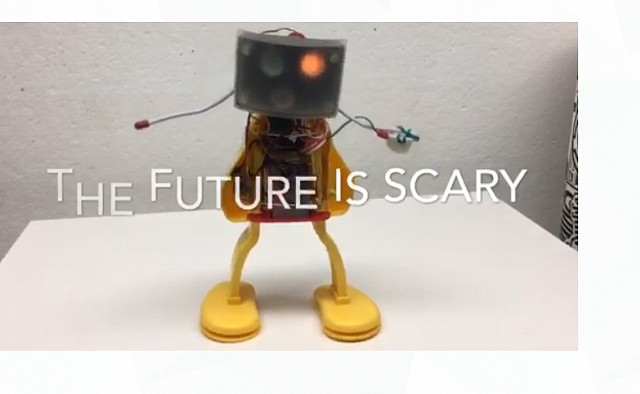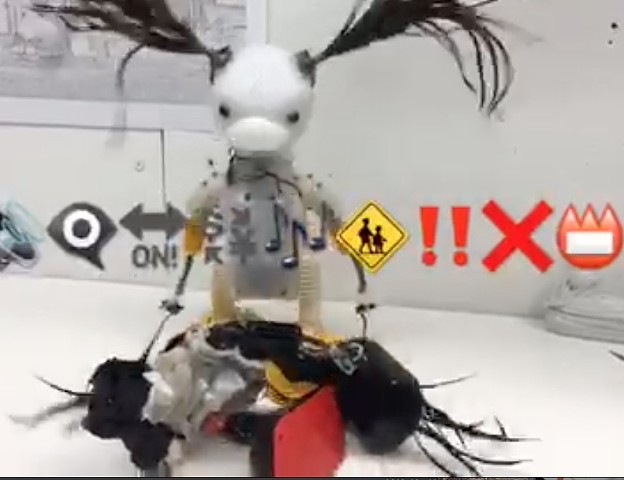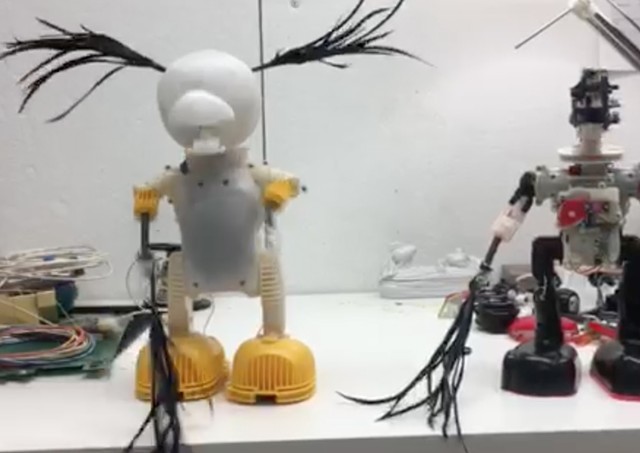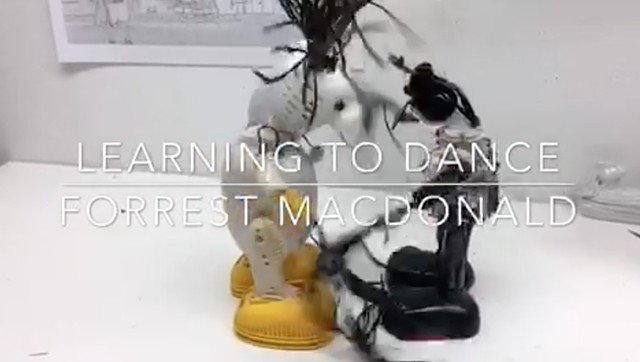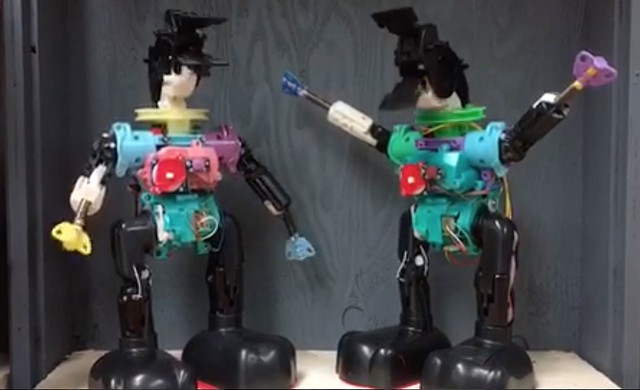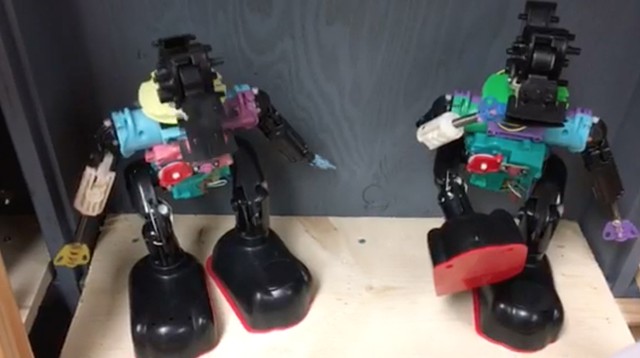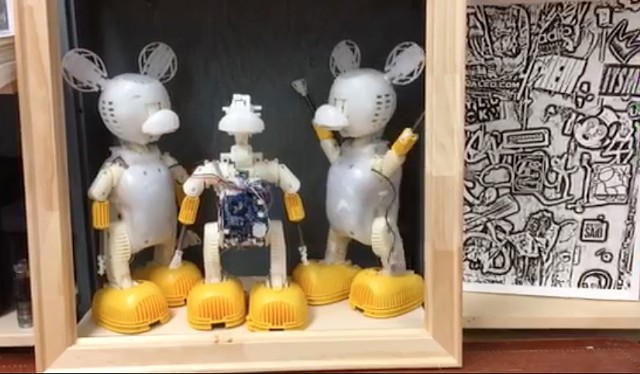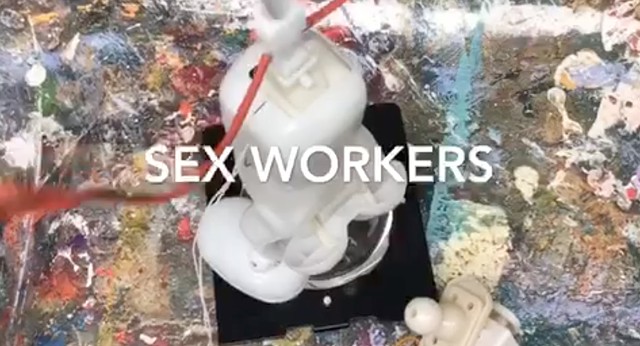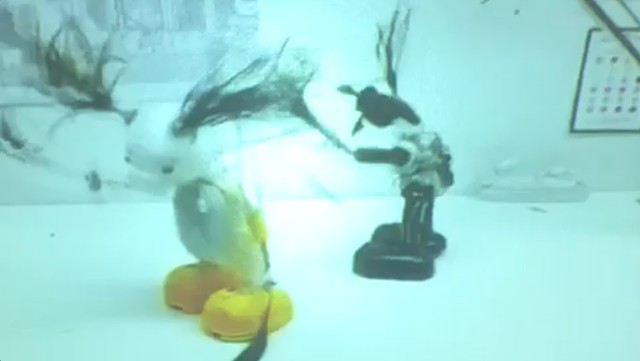THE FUTURE IS SCARY 2019
The Future is Scary (2019) is a mixed-media installation that confronts the specter of uncertainty in the coming age. Drawing upon previous works that explore trepidation about the future, it takes shape within The Box, an exhibition space at the University of South Florida. Comprising nine kinetic sculptures, a series of short films projected onto a wall, and graffiti-inspired canvases, the work functions as a haunting meditation on the collapse of innocence in an increasingly mechanized world.
At its core, the most disquieting element of the installation is a collection of animated, deconstructed children’s toys. These figures—once symbols of warmth and comfort—are now transformed into unsettling mechanical creatures. Rooted in MacDonald’s earlier Wired Up series, these toys, salvaged from second-hand stores, have been stripped of their soft exteriors and their once-innocent charm. In their place, mechanical constructions are laid bare: exposed skeletons of what were once familiar childhood companions. “The figure is a living thing, and so it must live in time, constantly revealing its mechanism,” as philosopher and artist Giorgio Agamben writes. In these skeletal remains, we are confronted with the mechanical truth beneath the surface, an unsettling vision of how technology, rather than liberating us, can reduce us to mere automatons.
Stripped of fabric and stuffing, these toys no longer bear the markings of their former selves. Their identities erased, they become not just figures of nostalgia, but disturbing symbols of what happens when innocence is repurposed. This act of deconstruction, where the object’s exterior is violently peeled away, is both an assault on the object’s identity and a metaphor for the unmasking of the systems—social, technological, and political—that govern our lives. “What the artist renders visible is not what we see, but what has always been hidden,” wrote philosopher Jacques Rancière, capturing the essence of MacDonald’s work. These figures, no longer recognizable, become ghostly echoes of a lost era, their jerky movements and distorted forms serving as a stark warning.
The sculptures' mechanical, often stilted motions evoke a sense of alienation and estrangement. No longer the playful movements of a child’s toy, their jerks and twitches now appear unnatural—almost grotesque. In this way, MacDonald mirrors the dissonance of a world where progress, while promising freedom and joy, instead creates a disjointed, even threatening reality. The unnerving movement of these figures is not unlike that described by art historian Susan Sontag in her essay On Photography, where she writes: "In the end, it is the work that informs the viewer of the world that is no more… It has been made strange." The strangeness here is not merely in the form of the toy, but in its very being—the dislocation of the familiar from the comforting into the uncanny.
Additionally, MacDonald enhances the eeriness of these figures by adding textures and appendages—feathers, fabric, and other materials—that further distort their movements, making them seem both alien and perverse. What was once designed to comfort now evokes only discomfort, a sense of growing dread. It is a stark commentary on how the warmth of nostalgia can, when reexamined, be revealed to be fraught with darker, more complex emotions.
“The unheimlich,” as Freud described the uncanny, manifests here through toys that once symbolized safety and childhood joy, now transformed into symbols of an unknown, and perhaps unwelcome, future. The unsettling nature of these figures—some with movements far too adult for their original form—serves as an eerie allegory of the present, where the boundaries between innocence and corruption are blurring, and where technology, with its unrestrained power, continues to invade the very fabric of human experience.
Ultimately, The Future is Scary offers not merely a vision of unease, but a profound inquiry into what happens when the comfort of the past is taken apart, exposed, and reassembled into something foreign. The installation asks, not just what is lost in the process, but what we might gain—or lose—in the future that awaits us. It echoes the words of the poet Rainer Maria Rilke, who spoke of art as a mirror of the "timeless" and the "future": "Art is the only way to run away without leaving home." In this work, MacDonald’s future is a place we cannot flee from—an inevitable, albeit unsettling, destination.
